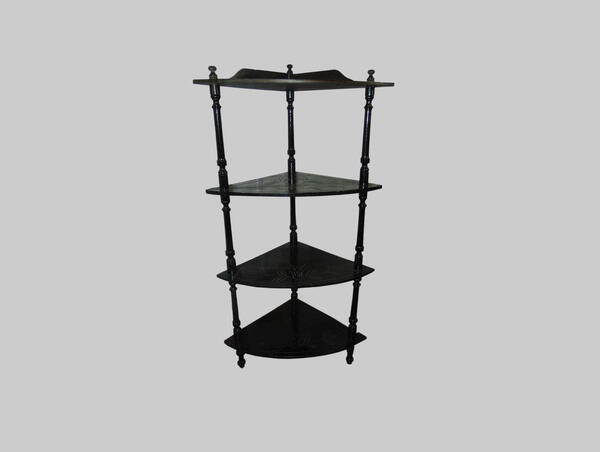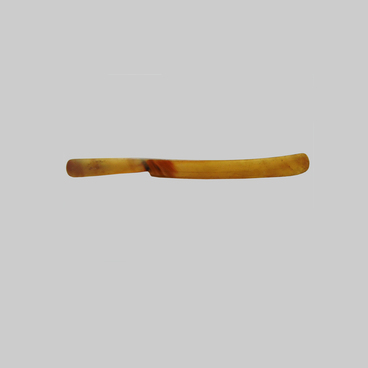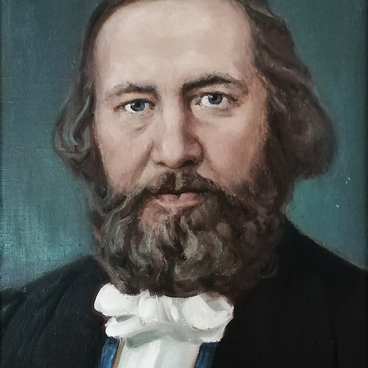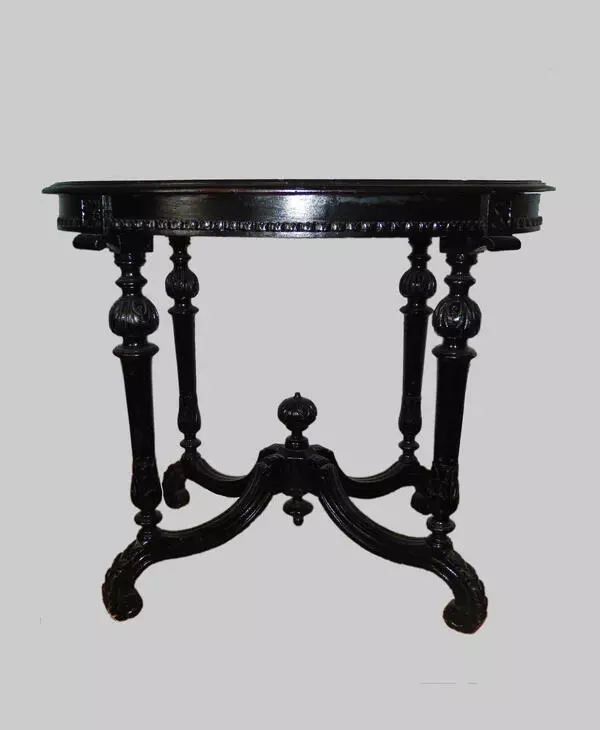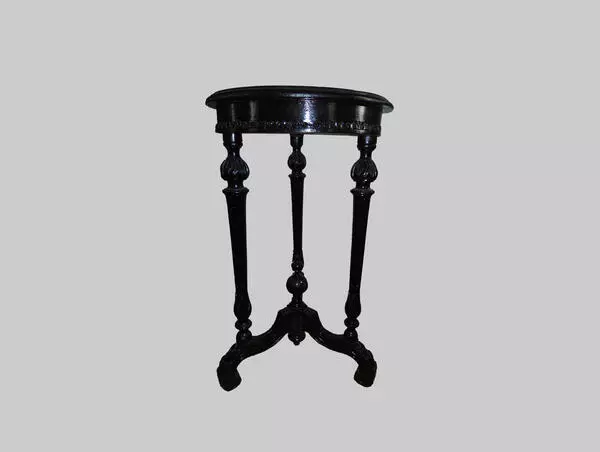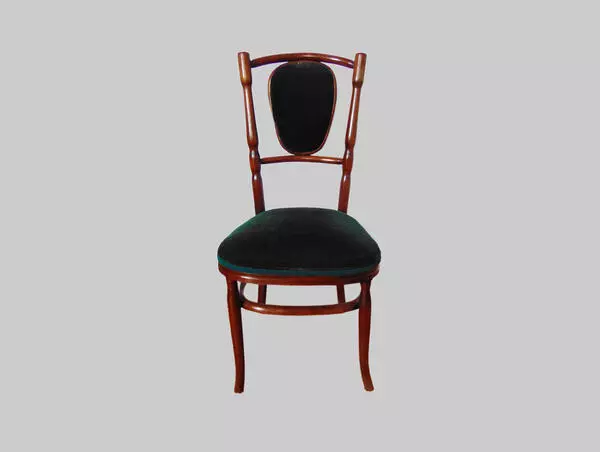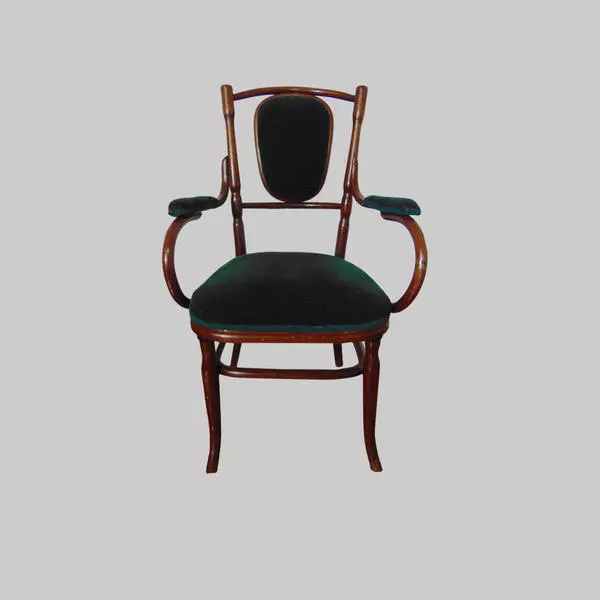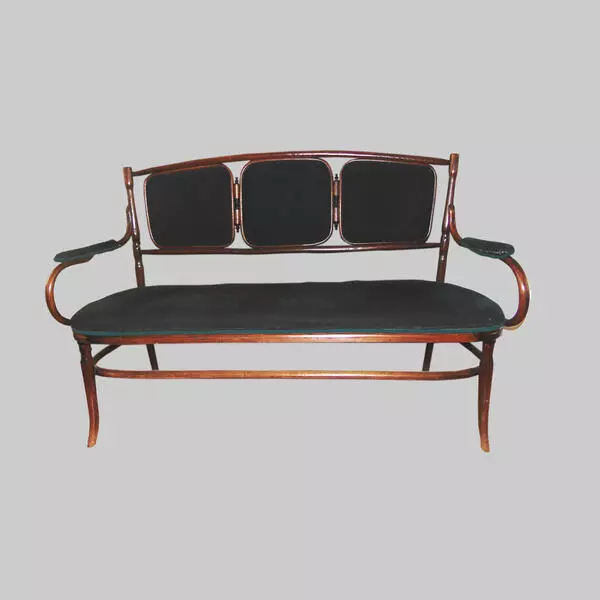In the early 20th century, Russian noblemen’s houses, among the other furniture, always had a bookcase, usually in the form of a standing or a hanging rack, with shelves open from all sides and supported by openwork stands. This fashion for bookcases also touched the house of the Aksakov family. It stood in their living room to store magazines, documents, home accessories and decorative items.
At that time, a bookcase’s value was considered not only by its functionality, but also by its aesthetic quality. It is no coincidence that the ‘Large sitting room’ presents an exquisite black corner bookcase, manufactured in a factory of the great German-Austrian master cabinetmaker Michael Thonet. Among his many technological innovations was a method of manufacturing furniture by bonding strips of veneer in wooden molds. This method was also applied in creating the bookcase. It is also worth noting that it has a spectacular glossy surface thanks to the abundant coating with a special dark varnish.
The Russian name for this kind of bookcases — Etazherka — is derived from the French word ‘étagère’. According to a belief, the first open bookcases appeared back in the Renaissance period in the 14th century. They were mostly found among wealthy Europeans who needed furniture to store various interior items. Since the 18th century in France, mass production of bookcases has developed. Furniture masters would most often have orders for small custom structures, well suited for placing flowers, books or attributes of luxury. At the same time, varieties of floor bookcases with closed shelves started to emerge.
In the early 20th century, bookcases became so popular that they could even be found on ships. At that time, there were many new designs, including ones made of metal and complex combinations of materials. Nowadays bookcases are used virtually everywhere, starting with bathrooms and living rooms to offices and large factory workshops. More specific designs are also built, for example, for cooling units or industrial warehouses.
At that time, a bookcase’s value was considered not only by its functionality, but also by its aesthetic quality. It is no coincidence that the ‘Large sitting room’ presents an exquisite black corner bookcase, manufactured in a factory of the great German-Austrian master cabinetmaker Michael Thonet. Among his many technological innovations was a method of manufacturing furniture by bonding strips of veneer in wooden molds. This method was also applied in creating the bookcase. It is also worth noting that it has a spectacular glossy surface thanks to the abundant coating with a special dark varnish.
The Russian name for this kind of bookcases — Etazherka — is derived from the French word ‘étagère’. According to a belief, the first open bookcases appeared back in the Renaissance period in the 14th century. They were mostly found among wealthy Europeans who needed furniture to store various interior items. Since the 18th century in France, mass production of bookcases has developed. Furniture masters would most often have orders for small custom structures, well suited for placing flowers, books or attributes of luxury. At the same time, varieties of floor bookcases with closed shelves started to emerge.
In the early 20th century, bookcases became so popular that they could even be found on ships. At that time, there were many new designs, including ones made of metal and complex combinations of materials. Nowadays bookcases are used virtually everywhere, starting with bathrooms and living rooms to offices and large factory workshops. More specific designs are also built, for example, for cooling units or industrial warehouses.

